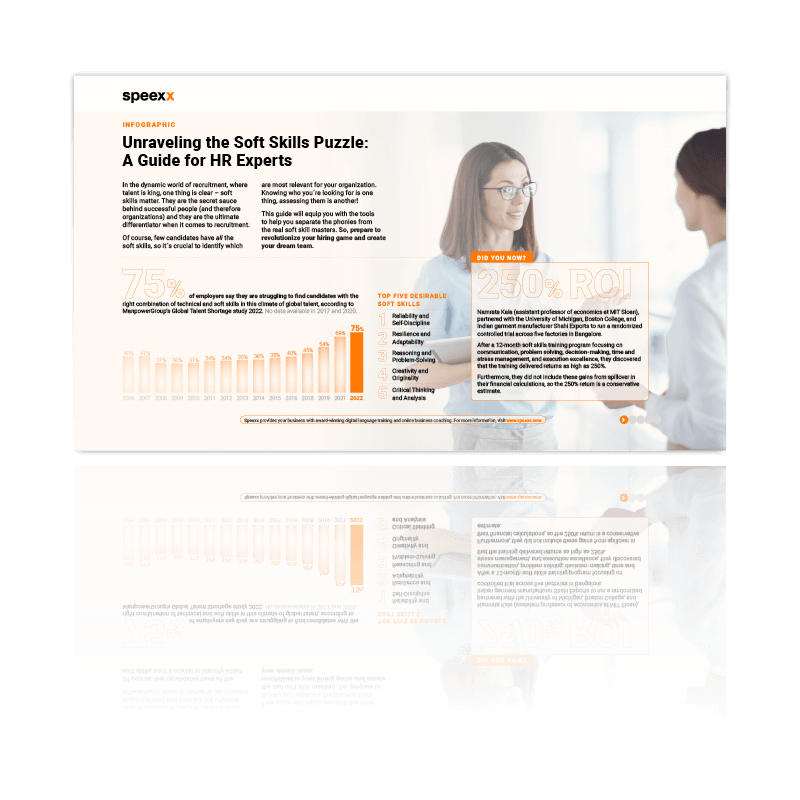Ageism in the workplace is far more common than we realize. So why does it still exist and how do we mitigate it? The fact is, in many areas of our lives, we tend to emphasize differences between generations, highlighting their seemingly characteristic traits. Consciously or not, we often make assumptions about people – be it their cultural preferences, political views, or even their relationship with technology – based purely on their age. Naturally, the worldview of one generation likely differs from another given they were raised in distinct eras with unique conditions, values, and behaviors. And certainly, age influences personality: we generally think and act differently in our seventies compared to when we were 25. However, does this rather reductionist way of deciding who people are based on their age truly have value?

For HR professionals, understanding generational differences is crucial, especially during hiring, and while generational concepts might be useful for buyer profiling or social media campaigns, categorizing candidates or employees by generation can introduce a bias: it overlooks the “human” in Human Resources, i.e. the unique qualities of each individual. This article aims to shed light on and offer potential strategies to help reduce age discrimination in the workplace.
Some Common Biases That Are Too Often Accepted
Certain biases, particularly conscious ones, are more noticeable, perhaps because they’re more easily recognized. An example is confirmation bias: the inclination to favor those sharing one’s views and avoid those causing discomfort. Despite its acknowledgment, this bias persists.
Another related bias is group bias. We might overvalue our own group’s abilities, attributing our success to merit and dismissing others’ successes as mere luck. This bias, oddly accepted, can cause misunderstandings within companies.
Ageism is another bias. It encompasses behaviors that stereotype people by age, often accepting broad generalizations without verifying their accuracy. Since age is objective, these stereotypes are somewhat socially “accepted.” Ageism usually appears in three forms:
Institutional ageism, stemming from actions and policies of institutions, like schools.
Interpersonal ageism, found in social interactions.
Internalized ageism, where individuals adopt and apply these beliefs to themselves.
Though age is an undeniable biological fact, we can refrain from solely judging people by it. Especially for leaders aspiring to be role models, it’s vital to be aware of ageist language and biases. To truly understand the complexities of human behavior, we must first address our own stereotyping.

A useful infographic designed to help HR professionals decode soft skills; explores why soft skills matter, which are most valuable, and how to assess them.
Workplace Ageism Against the Old
Bias against older individuals manifests in various ways: overlooking them for promotions or training, despite their years of experience. Older employees are sometimes stereotyped as being “set in their ways”, unwilling to adapt to new systems and technologies, as well as being more prone to health issues, thus leading to hesitations in hiring or retaining them. Such biases underutilize a crucial workforce segment with invaluable experience: seasoned talent has a perspective that their younger counterparts are yet to acquire.
Workplace Ageism Against the Young
We tend to assume that the term “ageism” refers exclusively to discrimination against older people, but prejudice against younger employees is also a pressing concern in today’s workplace. Often referred to as “reverse ageism” younger cohorts face their own unique set of challenges, most typically being perceived as lacking experience or maturity, leading to their ideas being dismissed, or not being given opportunities for leadership roles. There’s also a prevalent stereotype that Millennials and Gen Z are more prone to job-hopping and thus may not be seen as long-term investments for a company. The other common assumption is that they are all tech-savvy, which can lead to young people being pigeonholed into specific roles or burdened with tech-related tasks irrespective of their actual competencies.
When it comes to creating an inclusive and diverse workforce, age is just as relevant as race, religion, and sexuality, and it is the responsibility of the HR department to tackle ageism in a bid to foster a genuinely inclusive company culture.
Creating an Age-Inclusive Culture
Achieving organizational success requires leveraging insights from all age groups. Here’s how:
- Design inclusive meetings and social activities.
- Conduct training to address prevalent biases, including ageism.
- Initiate mentorship programs pairing younger employees with experienced professionals.
- Avoid pension policies targeting specific age groups.
- Encourage managers to holistically evaluate both hard and soft skillsof employees.
- Create Employee Resource Groups (ERGs) for intergenerational dialogue.
- Promote good behaviors and highlight bad ones.
- Encourage ownership and give space in the workplace for right and wrong statements. We recommend the TED Talk ‘How to reduce bias in the workplace’.
- Regularly review hiring and promotion practices for fairness.
- Advocate the advantages of a multigenerational workforce.

A useful infographic designed to help HR professionals decode soft skills; explores why soft skills matter, which are most valuable, and how to assess them.
Use Training Programs to Counteract Age Discrimination
When designing training programs, age diversity should be considered. For example, if the course is related to technology, do not create groups and levels based on the assumption that younger staff already have advanced knowledge, and that older employees will need to be taught at a more basic level. Not considering what individuals know and can do based on their age is neither appropriate nor effective when managing talent; a person-centered approach is far better.
Also, a training program itself can be used as the perfect vehicle for encouraging people of different generations to work together, which is enriching for the employees and the company as a whole. During the courses – especially when they are live – people work in groups, where they can get to know each other better, exchange ideas, and discuss both professional and personal subjects. This promotes both intergenerational and inter-divisional interaction and ultimately helps to make a company stronger.
Do Not Assume Anything
Mitigating age discrimination in the workplace is a continuous process. But if we challenge our prejudices and assumptions and create an inclusive culture, we can make the world of work and training fairer and more productive for everyone. We must give staff members ample opportunity to express their feelings: whether that relates to their own performance, or to the attitudes of their colleagues in regard to age. Of course, these conversations need to be handled with sensitivity and confidentiality, as oftentimes people will not feel comfortable enough within a group environment to mention the issue of ageism. The takeaway is that we should not assume anything, but rather evaluate the knowledge and skills of an employee on a case-by-case basis.
